Best Balcony Orientation for Sunlight in Your Garden Setup
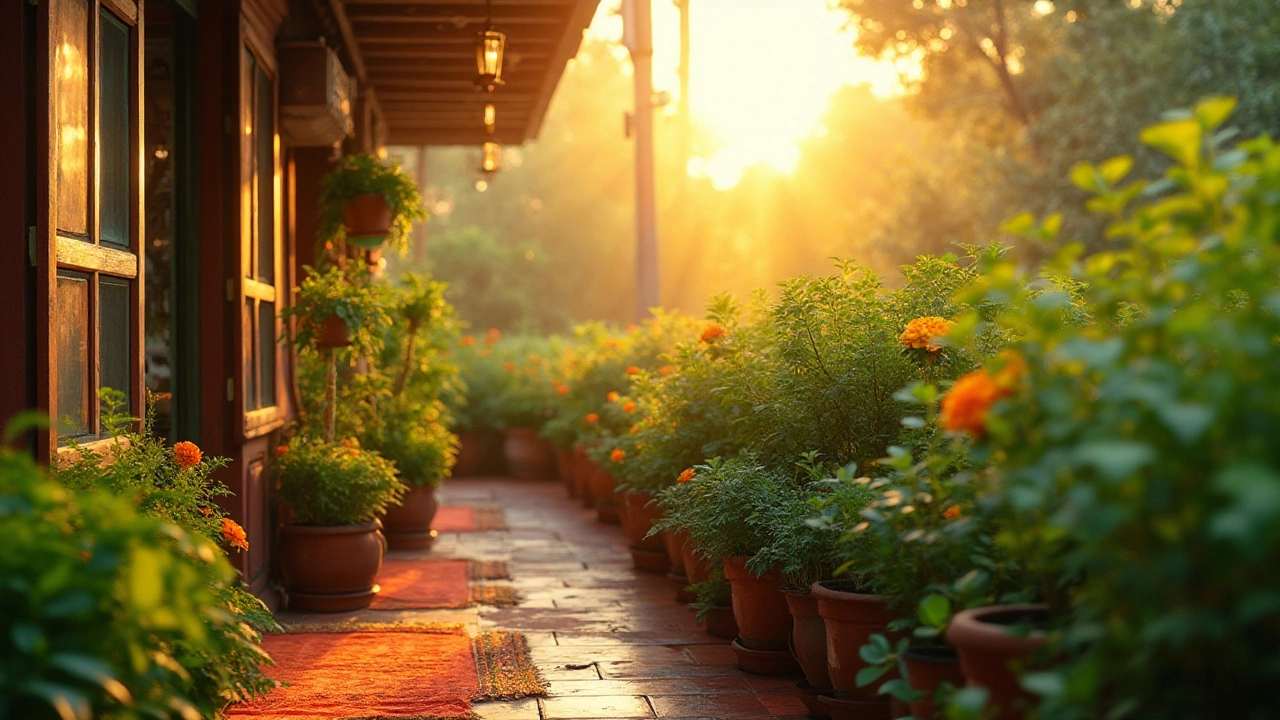
Best Balcony Orientation for Sunlight in Your Garden Setup
Setting up a balcony garden means considering multiple factors to ensure your plants receive the care they need. One of the most important aspects is determining the ideal direction for your balcony to face to take full advantage of natural sunlight. Each direction offers unique benefits and challenges, impacting how to care for your garden.
In this article, we will delve into how different balcony orientations affect sunlight exposure for your plants. By understanding these nuances, you can tailor your garden setup to accommodate the specific needs of your chosen flora. We'll also take a look at how climate plays a role in sunlight distribution and explore creative ways to overcome sunlight constraints, so you can still nurture a vibrant garden space.
- North-Facing Balcony
- South-Facing Balcony
- East-Facing Balcony
- West-Facing Balcony
- Climate Considerations
- Creative Solutions for Limited Sunlight
North-Facing Balcony
When it comes to planning a balcony garden, a north-facing balcony is generally recognized for receiving the least amount of direct sunlight throughout the day. This is because the sun rises in the east and sets in the west, following an arc that typically passes more towards the south. As a result, north-facing spaces often find themselves in the shadows, making them ideal for plants that thrive in indirect or low light conditions.
If you're yearning to create a green oasis on a north-facing balcony, it is crucial to choose the right plants. Opt for specimens known for their shade tolerance, such as ferns, hostas, or impatiens. Herbs like mint or parsley, which do not require intense light, can also thrive here. Having a variety of shade-loving plants can create an enchanting garden atmosphere without worrying about them getting too much heat or direct sunlight.
One must remember, however, that less sunlight may mean higher moisture levels, so be cautious with your watering habits. Over-watering remains a significant risk in shaded areas. Use your fingers to test soil dampness before adding more water. A drainage-friendly pot placement might ensure that excess water doesn't lead to root rot, which is a common issue in these setups.
In urban settings where skyscrapers might cast additional shadows even in light-favored regions, north-facing balconies often capitalize on their cooler settings during the sweltering summer months. For city dwellers, this orientation offers a respite where one can relax without worrying about the searing sun's glare.
While some might find the lack of direct light limiting, others see an opportunity to experiment with different forms of garden art and layout. "Shadows create their own unique play of light," remarks landscape architect Elizabeth Myles. "Strategic use of decorative stones, natural wood, or water features can introduce dynamic elements that change throughout the day." Consider hanging mirrors to reflect light and brighten up the area or incorporating LED lights to add warmth and visibility during darker times.
For those gardeners with a design-focused mindset, a north-facing balcony can morph into a canvas where creativity meets tranquility. By using a bit of imagination and thoughtfulness, even a seemingly dim space can be transformed into a lush, peaceful retreat.
South-Facing Balcony
A south-facing balcony is often considered the gold standard for balcony gardens due to the abundance of sunlight it receives throughout the year. These balconies are drenched in sunlight for most of the day, especially during the fall and winter months when the sun is lower in the sky. This constant exposure to sunlight offers an ideal environment for a wide variety of plants that thrive in full sun. You’ll notice vibrant growth and more frequent flowering in a garden that enjoys such prime positioning.
The potential for a south-facing balcony is immense when it comes to growing fruits and vegetables too. It opens up an opportunity to nurture sun-loving crops like tomatoes, peppers, and strawberries. Their need for at least 6 to 8 hours of sunlight aligns perfectly with what your south-facing balcony can offer. If you're aiming for a lush, productive garden space, orienting your balcony this way can create a mini oasis of productivity.
However, it's important to remember that this exposure can also become quite intense, particularly during the peak summer months. The relentless sun can lead to issues such as heat stress and soil drying out more quickly. It’s crucial to select heat-resistant plants or ensure you have a reliable irrigation system in place to keep your plants well-hydrated. Shade sails or light row covers can offer relief during scorching days to prevent leaf scorch.
Catherine McDonald, noted horticulturist, emphasizes, "A south-facing garden is a dream for any passionate gardener. The trick is to balance the abundance of sun with regular watering schedules and occasional shade measures to maintain plant health."
Another aspect to consider is the potential for wind exposure. In some geographical locations, strong southern winds can accompany the sun, which may necessitate additional shielding or support for more fragile plants. Be strategic about plant placement, and consider windbreaks using larger pots or trellises that can also double as vertical gardening spaces.
An interesting detail about south-facing balconies is the thermal advantage they provide. The sunlight absorbed by adjacent walls can create a microclimate effect, extending your growing season by days or even weeks. Such features can be a significant boon for gardeners in colder climates who are always looking to extend their planting timeframe before the arrival of winter frost.
To help you plan your garden setup, here's a quick guide on some popular plant choices:
- Rosemary and Thyme: Perfect for a Mediterranean vibe, they bask in the sunlight.
- Geraniums and Petunias: These flowers add vibrant color and love the sun.
- Chili Peppers and Eggplants: Require ample sunlight for their fruit development.
- Succulents: Ideal for those who want low-maintenance yet sun-loving plants.
By leveraging the natural advantages of a south-facing balcony, one can create a thriving, sunlit paradise that not only contributes to one's household through home-grown produce but also boosts artistic and aesthetic appeal. It's all about adapting to the conditions and making informed, creative choices about your balcony garden setup.
East-Facing Balcony
An east-facing balcony is an inviting start to the day, basking in the gentle glow of the morning sun. As the sun rises, it streams natural light onto your plants, giving them a vital energy boost that starts their photosynthesis process early. This morning sunlight, though bright, remains less intense compared to the powerful rays of the afternoon. This can be particularly advantageous for plants that thrive under soft light without the risk of scorching. Many gardeners cherish this setup for flowering plants and leafy greens that prefer milder conditions. By nurturing plants like herbs, ferns, or even violets, you can cultivate a lush oasis benefiting from just the right amount of light.
Having an east-facing balcony isn't only about suitable light conditions; it also involves strategic planning for heat management. Those morning rays can warm up your balcony briskly as the day breaks, but as the sun climbs higher into the sky, shadows grow longer, leading to cooler afternoons. This variance in temperature and light exposure can be cleverly used to cater to different plant varieties. For instance, while more sun-sensitive plants bask in the morning, you could use the later hours for heat-tolerant flowers that don't need direct daily sunlight. Gardening pro Alice Thompson eloquently states,
"An east-facing garden is like a painter's easel, where each day begins with a fresh palette of sunlight to paint your plants."Wise positioning of reflective objects, such as mirrors or light-colored surfaces, can amplify the received light if needed.
Access to the invigorating morning sun impacts more than just the plants; it influences the holistic ambiance of your balcony. Positioned at the start of the day, an east-facing balcony becomes a serene retreat for morning rituals, whether it’s enjoying a cup of coffee or practicing yoga in the daylight tranquility. It instills a rhythm aligned with nature's cycle, offering an uplifting start as the world stirs awake. Morning sunlight catalyzes vitamin D production, an essential element for well-being, subtly transforming your balcony into a source of personal rejuvenation. This intimacy with sunlight, coupled with a thriving balcony garden, crafts a harmonious space that embraces vitality and calm.
When planning your garden, it's crucial to consider the architectural nuances and surrounding environment that may influence sunlight patterns. For example, neighboring buildings or trees casting shadows can impact light availability. Observing how sunlight traverses across your east-facing balcony through different seasons aids in optimizing plant placement. A well-positioned trellis can assist climbing plants in maximizing daylight exposure, ensuring they flourish even in fluctuating conditions. Remember, gardening is as much an art as it is a science, evolving with the changing courses of the sun and the seasons.

West-Facing Balcony
A west-facing balcony can be a gardener's dream or challenge, depending on how well you manage the sunlight it receives. In the afternoon hours, particularly from midday to sunset, a west-facing balcony gets a strong influx of sunlight. This is due to the sun's arc in the sky that brings it across the western horizon, bathing these areas in warming rays just as the day begins to wind down. But this influx isn't without its challenges. The sun can be intense, which means gardeners must consider a balance between benefiting from sunlight and protecting their plants from the scorching heat. During peak summer days, the heat can be overwhelming, potentially leading to sunburnt leaves and wilted flowers if appropriate measures aren’t taken.
One way to mitigate the direct heat is to select plants that thrive in full afternoon sun. Consider growing succulents, which are naturally adapted to withstand the intense light and warmth with their thick, water-retentive leaves. If you're aiming for color, geraniums are a vibrant choice that can handle the heat with aplomb. Herbs like rosemary and thyme also love the conditions provided by a west-facing balcony. However, for less hardy plants, it's often necessary to provide some form of shade during the hottest parts of the day. Using lattice screens, or placing taller plants strategically to cast shadow over delicate ones, can help regulate the conditions on your balcony garden.
To make the most out of the strong evening light, plan watering schedules carefully. Evaporation rates are higher on a west-facing balcony due to the heat, so watering in the early morning or late evening is ideal to maximize moisture retention. Soil choice is also crucial. Opt for soil that retains moisture well, like those enhanced with organic matter such as peat or compost. This ensures that even on warmer days, the roots have access to the water they need.
As noted by gardening expert Richard Roundtree in an enlightening article by "Gardener's Delight",
"Timing and plant selection are key elements when dealing with a westward view. Understanding the natural cycle of your west-facing balcony empowers you to create a thriving garden even under a blazing sun."
Creating a windbreak can also aid in protecting plants from the drying effects of warm winds, which often coincide with the direct sun exposure in the afternoon. Simple solutions include taller potted shrubs or even a weatherproof balcony screen. This can shield your delicate plants and allow them to bask under the right conditions without undue stress. Balcony garden enthusiasts often cite the reciprocal benefit of west-facing setups - the golden warmth not only nurtures growth, but it also provides a stunning backdrop to evening relaxation. Watching the sun set over your garden is a pleasure that adds to the enjoyment of your hard work.
For those seeking to measure the exact conditions of their balcony environment, utilizing tools like a light meter can be valuable. Such tools offer precision when it comes to determining the amount of light specific sections of your garden receive, allowing for fine adjustments in plant placement and care routines. Armed with these insights and adjustments, a west-facing balcony becomes a site of horticultural success, balancing the intensity of sunlight to create a sanctuary of vibrant, happy plants.
Climate Considerations
When planning a balcony garden, climate considerations play a critical role in ensuring your plants thrive. Understanding the local climate will help you decide which direction your balcony should face for optimal sunlight exposure. For instance, if you live in a northern latitude, such as Scandinavia, where sunlight is limited during certain months, a south-facing balcony is often ideal for maximizing sunlight intake. This direction will allow your plants to soak up the most sunlight throughout the day, which is crucial during the shorter winter months when daylight dwindles.
Conversely, if you reside in a hotter, sun-drenched region like southern California or Australia, a north-facing balcony might be more beneficial to prevent overheating and sunburn in your plants. This direction can bring the added advantage of cooler, indirect sunlight, which is gentler on most plant species vulnerable to intense heat. In such climates, providing your plants with some shade during the hottest parts of the day will help prevent wilting and other sun-induced damage.
Understanding Global Solar Patterns
Solar paths vary drastically across different regions and seasons, and understanding this can guide you in setting up a productive garden. For instance, in the equatorial regions, the sun rises quickly and remains directly overhead for a significant portion of the day, which is quite different from temperate regions where the sun travels a lower arc across the sky. Thus, adjusting the balcony orientation according to your location can greatly enhance the garden's productivity. An east-facing balcony might be perfect in tropical places, allowing your plants to benefit from gentle morning sunlight while avoiding the harsher afternoon rays.
Adapting to Microclimates
Even within a general climate classification, microclimates—small-scale variations or localized atmospheric zones—can exist and significantly influence your garden's success. Urban environments, for example, often exhibit unique microclimates due to the heat emitted by buildings and roads. In densely packed urban areas, a balcony facing what seems like an optimal direction might not receive as much light because of shadowing from adjacent structures. When this is the case, you might leverage reflective surfaces like mirrors strategically placed to redirect sunlight to your balcony garden. According to horticulturist Dr. Alex Marshal, "Utilizing local features and structures creatively can transform a shadowed area of your balcony into a lush space bursting with life."
Climate considerations also extend to wind patterns, which can affect plant health. Balconies exposed to strong winds may require protective measures like windbreaks or sturdier plant supports to prevent damage. Choosing plant species with hardy, compact growth is another strategic adaptation to windier climates. For those residing in humid coastal regions, selecting mildew-resistant plants can help maintain a thriving garden despite higher moisture levels.
| Climate | Best Orientation | Key Considerations |
|---|---|---|
| Northern Cold | South-facing | Maximize light in winter |
| Hot and Arid | North-facing | Prevent plant overheating |
| Tropical | East or West-facing | Moderate morning/afternoon light |
By carefully considering climate factors, you can create a garden setup that not only suits your aesthetic preferences but also meets the environmental needs of your specific area. Investing time in research and possibly consulting local gardening experts can provide invaluable insights tailored to your unique conditions. Designing your balcony garden with respect to climatic conditions ensures that you're nurturing an environment where plants can flourish regardless of natural limitations.
Creative Solutions for Limited Sunlight
Many of us find joy in creating a balcony garden, yet we face the challenge of limited sunlight, particularly in urban settings where buildings cast long shadows. Limited sunlight doesn't mean your gardening dreams have to wither away. Instead, darkness can inspire creativity. To adapt, you can choose plants that thrive in low-light conditions. Ferns, ivy, and certain herbs like mint and parsley are known for their resilience in shaded areas. These varieties can transform your balcony into a thriving oasis of green, without needing direct sunlight.
Additionally, consider utilizing reflective surfaces to amplify the sunlight that does reach your balcony garden. Mirrors, light-colored walls, or tiles can help bounce light to areas that may not naturally receive it. This is a clever way to maximize light exposure without altering the structure of your balcony. Hanging planters and vertical gardens can also optimize space and light, allowing you to grow more plants in a limited area. Stacking plants at different heights can replicate the canopy effect found in nature, ensuring that each plant gets its share of light at varying intensities throughout the day.
Using Technology to Your Advantage
Technological innovations can be a gardener's best ally when sunlight is in short supply. Grow lights have advanced significantly and provide artificial sunlight that can support photosynthesis effectively. These lights replicate the sun’s spectrum, allowing plants to grow lushly in indoor settings or balconies with less natural light. Pair these with timers to automate light cycles, mimicking natural day-night rhythms. This approach allows even the most light-challenged spaces to support a robust and vibrant garden.
“Where there is light, there can be life; where there is ingenuity, there can be a garden,” says horticultural expert, Jane Peterson, underscoring the importance of adapting gardening strategies to light conditions.
A worthy mention is the use of solar panels. Some gardeners install small solar panels to power these grow lights, maintaining an eco-friendly atmosphere that aligns with sustainable living goals. Solar technology isn’t limited to powering lights; it can fuel small hydroponic systems, allowing for innovative growing methods that require no soil.
Data and Trends
For those interested in the statistics around gardening trends, it's worth noting that as of the latest studies, about 60% of urban dwellers have some form of balcony garden, according to the Urban Gardening Association. Of these, nearly half report challenges with limited sunlight, leading to a surge in the purchase and usage of grow lights and reflective technology.
| Solution | Percentage of Usage |
|---|---|
| Grow Lights | 45% |
| Reflective Surfaces | 30% |
| Solar Panels | 25% |
These numbers illustrate a growing acceptance and reliance on technological solutions to counteract the natural limitations of urban gardening. Remember, the goal here is not just to sustain life but to allow it to flourish even in less-than-ideal sun conditions.
About
Gardener Support India is your go-to online destination for expert advice on gardening and horticultural services in India. Whether you're a beginner or an experienced gardener, our platform offers extensive resources, tips, and support tailored to Indian climates and plant species. Explore a wide range of guides on plant care, sustainable gardening practices, and innovative gardening solutions. Connect with local experts to enhance your gardening experience and maintain a flourishing garden. Our dedicated services aim to empower Indian gardeners with the knowledge and tools needed for a successful gardening journey.
Latest Posts
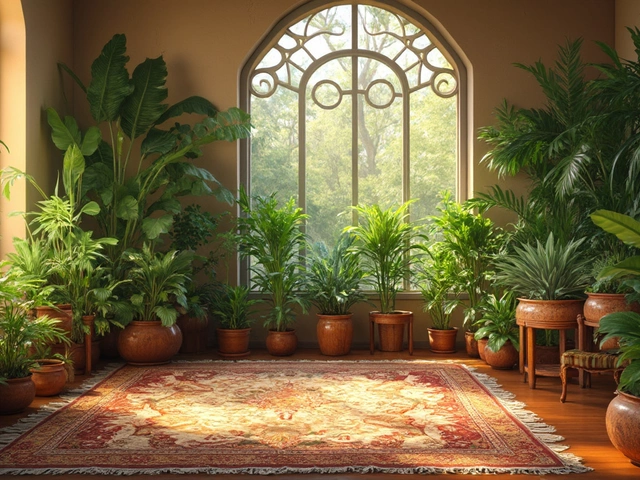
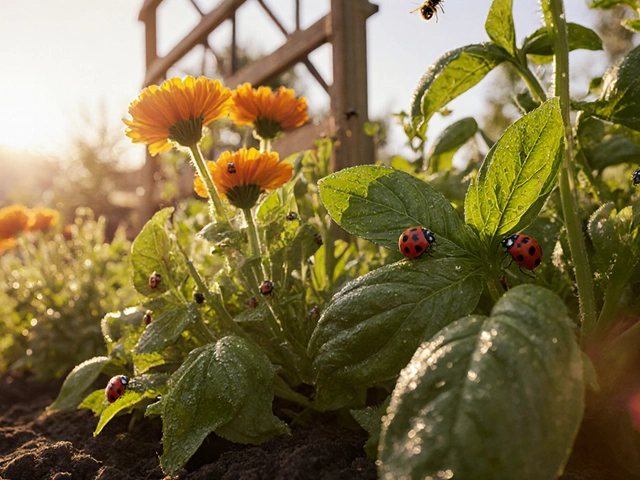
DIY Natural Pest Control: Simple Home Remedies for a Bug‑Free Garden
By Alden Thorne Oct 12, 2025

Number One Natural Insect Repellent: The Truth About What Really Works
By Alden Thorne Jun 10, 2025
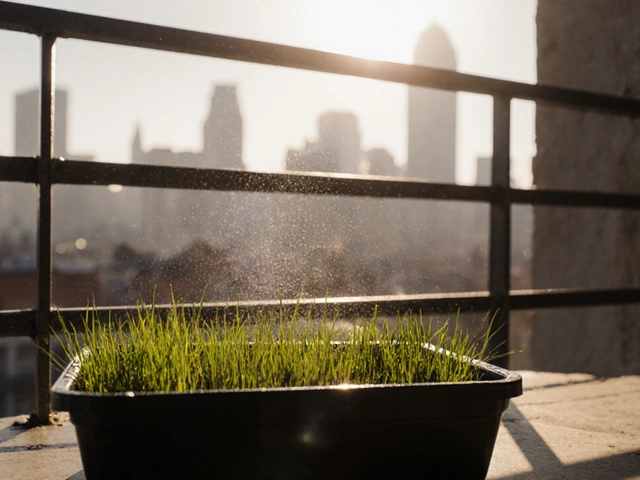
How to Grow Grass on a Balcony: Step-by-Step Guide
By Alden Thorne Oct 9, 2025
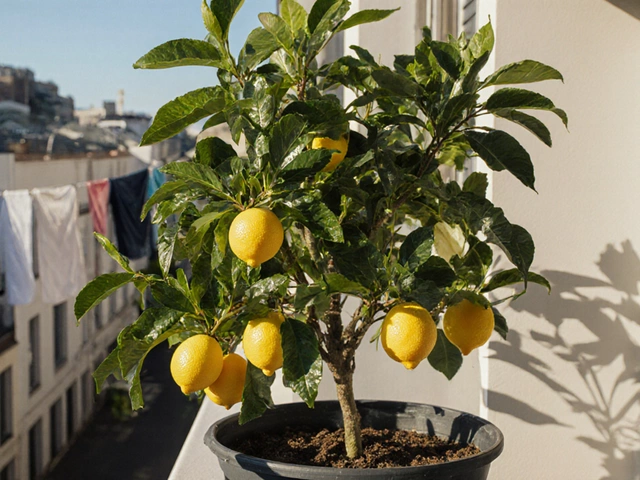
Write a comment